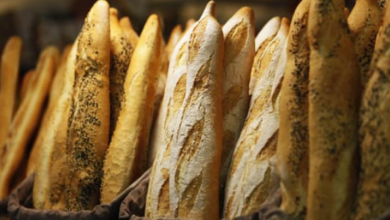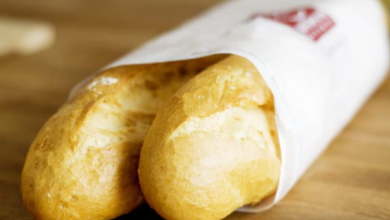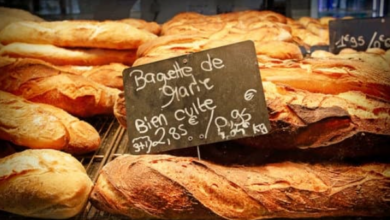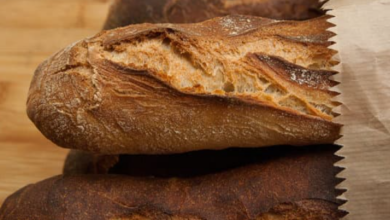The Baguette Vs. Boule Bake-Off: A Battle for the Best Loaf You’ve Ever Had

What To Know
- On the other hand, if you prefer a hearty and flavorful bread that can stand up to bold ingredients, the boule is the perfect choice.
- Whether you prefer the light and airy baguette or the hearty and flavorful boule, there’s a bread out there to suit every taste and occasion.
- French bread loaves, on the other hand, are shorter and wider, with a thicker crust and a denser crumb.
In the realm of French bread, two iconic creations stand out: the baguette and the boule. Both are beloved for their distinct characteristics, from their shape and texture to their flavor and versatility. In this comprehensive guide, we delve into the world of baguette vs boule, exploring their unique qualities and highlighting the factors that set them apart.
Understanding the Baguette: A Parisian Icon
The baguette, with its elongated shape and crisp crust, is a symbol of Parisian gastronomy. Its origins can be traced back to the 19th century, when it quickly gained popularity among the working class due to its affordability and portability. Today, the baguette remains a staple in French bakeries and is enjoyed worldwide.
Key Features of a Baguette:
- Elongated shape, typically ranging from 2 to 3 feet in length
- Thin and crispy crust with a golden-brown color
- Soft and airy crumb with a slightly chewy texture
- Mild flavor that complements a variety of fillings and accompaniments
Discovering the Boule: A Rustic Round Delight
In contrast to the baguette’s slender form, the boule is a round, rustic bread that exudes a homely charm. Its name, meaning “ball” in French, aptly describes its shape. The boule is known for its dense and chewy texture, making it a perfect choice for hearty sandwiches and crusty bread bowls.
Key Features of a Boule:
- Round shape, typically ranging from 6 to 12 inches in diameter
- Thick and chewy crust with a golden-brown color
- Dense and chewy crumb with a slightly tangy flavor
- Robust flavor that stands up to strong cheeses and bold fillings
Comparing Baguette and Boule: A Side-by-Side Analysis
To further illustrate the differences between baguette and boule, let’s compare them side by side:
| Feature | Baguette | Boule |
| — | — | — |
| Shape | Elongated, thin | Round, thick |
| Crust | Thin and crispy | Thick and chewy |
| Crumb | Soft and airy | Dense and chewy |
| Flavor | Mild, versatile | Robust, tangy |
| Ideal Uses | Sandwiches, appetizers, crusty bread | Sandwiches, soups, bread bowls |
Which Bread is Right for You?
The choice between baguette and boule ultimately depends on your personal preferences and intended use. If you’re looking for a light and airy bread that pairs well with delicate fillings, the baguette is an excellent option. On the other hand, if you prefer a hearty and flavorful bread that can stand up to bold ingredients, the boule is the perfect choice.
Additional Factors to Consider:
- Freshness: Both baguette and boule are best enjoyed fresh from the bakery. If you’re unable to consume them immediately, store them properly to maintain their quality.
- Serving Suggestions: Baguettes are often sliced lengthwise and filled with various ingredients, such as cheese, ham, and vegetables. Boules, on the other hand, can be sliced into rounds or wedges and served with soups, stews, or salads.
- Versatility: Baguettes and boules can be used in a variety of dishes, from sandwiches and appetizers to French toast and bread pudding. Their versatility makes them a staple in many kitchens.
The Art of Pairing: Baguette and Boule with Accompaniments
The flavors of baguette and boule can be further enhanced when paired with complementary accompaniments. Here are some suggestions:
- Baguette: Butter, cheese, jam, honey, olive oil, balsamic vinegar
- Boule: Cheese, cured meats, tapenade, hummus, roasted vegetables
The Bottom Line: A Tale of Two Breads
Baguette and boule, each with its unique characteristics, offer a delightful journey through the world of French bread. Whether you prefer the light and airy baguette or the hearty and flavorful boule, there’s a bread out there to suit every taste and occasion. Experiment with different pairings and discover the endless possibilities that these classic French breads have to offer.
What People Want to Know
1. What is the difference between a baguette and a French bread loaf?
- Baguettes are typically longer and thinner than French bread loaves, with a crispy crust and a soft, airy crumb. French bread loaves, on the other hand, are shorter and wider, with a thicker crust and a denser crumb.
2. Can I make baguette and boule at home?
- Yes, it is possible to make baguette and boule at home with the right ingredients and equipment. However, it requires some skill and experience to achieve the desired texture and flavor.
3. How do I store baguette and boule properly?
- To maintain their freshness, store baguette and boule in a bread box or airtight container at room temperature. They can also be frozen for up to a month, but it is best to thaw them at room temperature before consuming.





